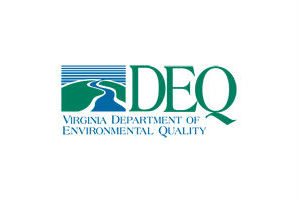
The new regulation, subject to final approval by the EPA, delineates updated criteria and revised assessment methodologies for James River chlorophyll.
High levels of chlorophyll, the green pigment in microscopic plants or algae, may indicate nutrient over-enrichment and can lead to other problems such as low dissolved oxygen and potentially harmful algae blooms that can impact aquatic life and public health.
The final amendments are the result of the DEQ’s seven-year evaluation and study in an effort to update the Water Quality Standards Regulation with best available science. The 2011 General Assembly authorized DEQ to use up to $3 million from the Water Quality Improvement Fund to conduct the study.
“These revised standards are breaking new ground in our efforts to restore clean water to the James River and the Chesapeake Bay,” said Governor Ralph Northam. “Protecting the commonwealth’s waters and the health of our communities is essential to our sustained economic growth and work to make Virginia a better place to live, work, and visit.”
The final amendments are based on public feedback and the recommendations of a scientific advisory panel and a regulatory advisory panel made up of representatives from the EPA, environmental organizations including the Chesapeake Bay Foundation and the James River Association, academic entities including Old Dominion University, Virginia Institute of Marine Science, Virginia Commonwealth University and Virginia Tech, government agencies including the City of Richmond, City of Hopewell, Henrico County, the Virginia Department of Conservation and Recreation, Virginia Department of Health, U.S. Fish and Wildlife and many other stakeholders.
“This is a big step toward ensuring that our waterways are protected from threats like harmful algal blooms,” said Virginia Secretary of Natural Resources Matthew J. Strickler. “Strengthening our environmental protections regarding chlorophyll and harmful algal blooms to reflect the latest scientific understanding will improve water quality to the benefit of aquatic life and outdoor recreation, and promote sustainable fisheries and aquaculture.
“These amendments are the result of the steadfast collaborative effort between DEQ, the regulated community and water quality advocates that focused on chlorophyll-a dynamics and how they link to aquatic life in the James River,” said DEQ Director David Paylor. “Fed by 15,000 miles of waterways, the protection of the tidal James not only supports local water quality but also contributes to Virginia’s efforts to restore the Chesapeake Bay.”
Among the most notable changes to the regulation are modified seasonal mean criteria (eight proposed criteria are lower than the existing criteria and two proposed criteria are higher) and new short-duration criteria that protect aquatic life from the effects of toxic algae. Additionally, new language describing how water monitoring data should be analyzed and the allowable exceedance frequencies for both sets of criteria have been inserted into the regulation.
The SWCB also finalized changes to two programs administered by DEQ to expand access to loans for water quality improvement projects. Local governments participating in the Living Shorelines program are now authorized to offer incentives to small businesses, bed and breakfasts, and other working waterfront owners seeking to establish more natural erosion control methods.
Changes in guidelines for the Agricultural Best Management Loan clarify potential tax liability associated with accepting principal forgiveness. The agricultural loan program may now authorize up to 100 percent of loan assistance in the form of principal forgiveness for projects that provide a high water quality benefit. By helping fund projects such as fencing for livestock, the program prevents fertilizers and manure from entering waterways and help prevent pollution from excessive nutrient runoff.
For more information about Virginia’s water quality programs, visit the DEQ website at https://www.deq.virginia.gov/Programs/Water/WaterQualityInformationTMDLs.aspx










